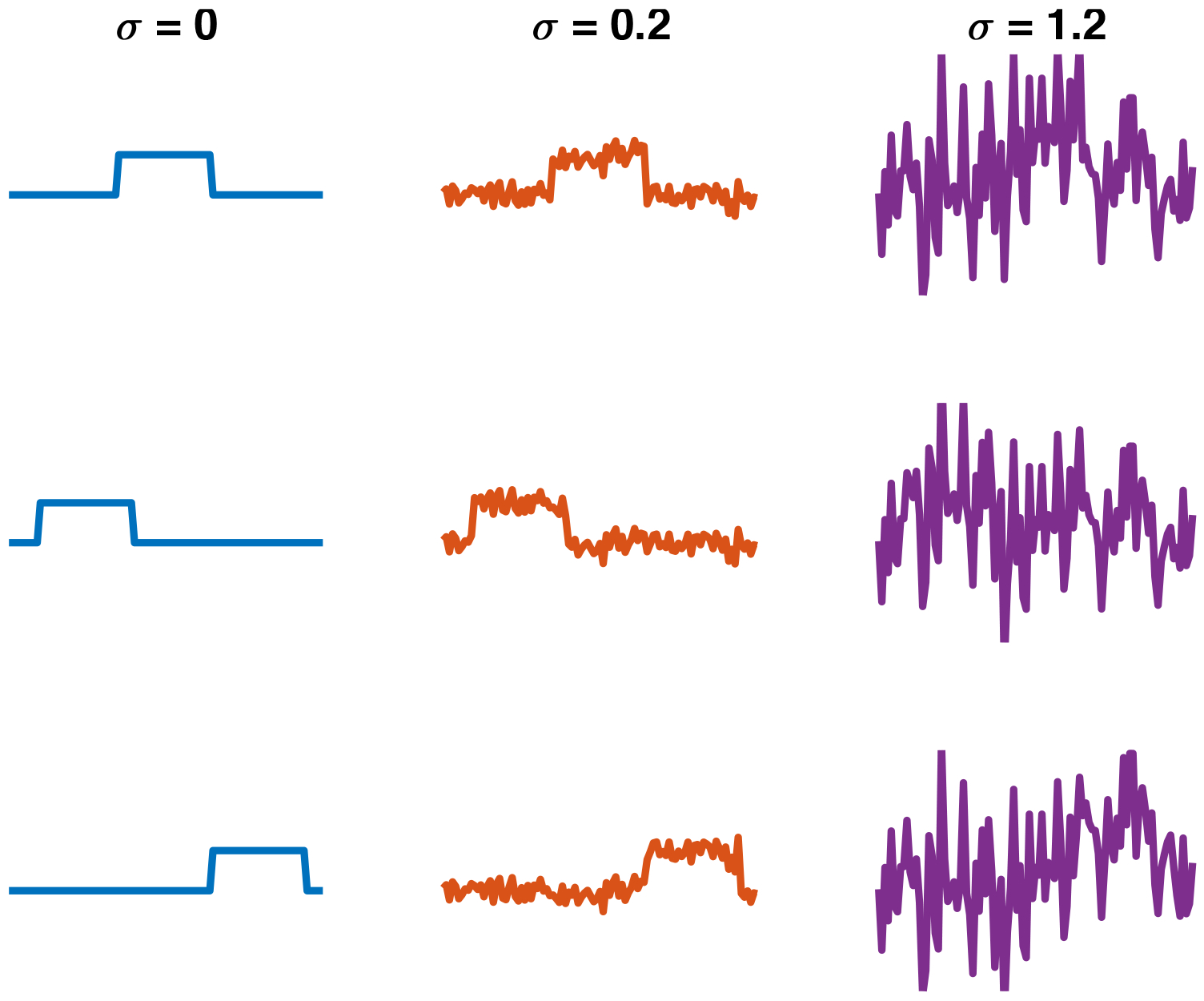Fig. 7:

An example of multi-reference alignment observations at different noise levels σ. Each column consists of three different cyclic shifts (the group actions) of a 1-D periodic discrete signal (the linear operator T is the identity operator). Clearly, if the noise level is low, estimating the signal is easy: one can align the observations (i.e., undo the group action) and average out the noise. The challenge is to estimate the signal when high noise levels hinder alignment (right column).
